Round of Texel 2024

Texel is really the place to be for catamaran sailors. To join the Round of Texel they arrive with hundreds to the island . Every year this biggest catamaran race takes place around the island , which has started out as a small one.
The beach at pole 17 is the traditional starting and finishing point. In the week before the round there are surfing and catamaran races and party nights in the big tent. Many well-known Dutch artists and DJ’s perform there.
The catamaran race can be viewed from many places. One of them is the pathway along the sea at pole 20 ( De Koog ), near the lighthouse and further ahead at pole 33 ( De Cocksdorp ), where the catamarans sail along the coast. You also have a good view from the dyke at Oosterend , the harbor of Oudeschild , the dyke near the NIOZ and the ferry port on the ’t Horntje.
Round Texel Race
www.roundtexel.com

Other events on Texel
- Agricultural day; End July
- HavenVIStijn; August
- Living Room Theatre Festival Broadway;
- Culinary Texel;
- Ouwe Sunderklaas; Thursday 12 December 2024
- Beach Food Festival;
68292 reviews
+31-222-390 112
Monday-Friday: 08.30 - 20.00 Weekend: 9.00 - 17.00
+31-6 1349 1966 (Whatsapp)
Daily 9.00-20.00 Response within 30 min.
Response within 48 hours
View more contact details
Or see the frequently asked questions
- English Nederlands English German

- Holiday park De Krim
- Villa Park De Koog
- Bungalow Park 't Hoogelandt
- Hotel Molenbos
- Residentie Californië
- View all parks
- Last minutes
- Campsite De Krim
- Campsite De Shelter
- Campsite Kogerstrand
- Campsite Loodsmansduin
- View all campings
- Holiday home
- Luxury villa
- Family villa
- Villa with pool
- Hotel chalet
- Camping pitch
- Furnished tent
- Camperpitch
- Hiker's cabin
- Seasonal pitch
- Naturist campsite
- Conferences
- Company outing
- Business meeting
- Company party
- School trip
- School camp
- Family weekend
- Family party
- Friends' weekend
- Kids parties
- Training camp
- Club outing
- Group accommodation
- Group camping
- Group activities
- See all possibilities
- Family bingo
- Texelpop 16/3
- Queen Must Go On 13/04
- Marlijn Weerdenburg 20/04
- View agenda
- Keez tournament
- Texel Darts Trophy
- Swimming pool
- Golf Course
- Gamehal: Lasergame & Mini Golf
- Bowling alley
- Climbing park
- Kids’ play paradise
- Nature adventure
- Restaurants
- Texel Top 10
- Texel in 2024
- Typical Texel
- Nature reserves
- Sights to see
- Watersports
- Bird watching
- Events on Texel
- View all Texeltips
- Texel with children
- Romantic Texel
- Texel with dogs
- Disabled friendly holiday
- De Cocksdorp
- View all villages
- May holiday
- Summer holiday
- Autumn holiday
- More School Holidays
- Ferry / TESO
- Public transport
- Current weather
- Information by park
- Addresses & Routes
- Price lists
- Inventory lists
- Openinghours
- Recreation Programs
- Joris Jutter and friends
- Overview of all parks
- Photo competition
- Work at De Krim Texel
- Job openings
- Holiday jobs
- Frequently asked questions
- In case of emergency
Water sports on Texel
Texel is one of the Netherlands’ popular water sports spots. No surprise really, because the island is surrounded by water. The Texel coast also has relatively more, and slightly bigger, waves than the rest of the Netherlands. Plus, our beautiful island enjoys an abundance of sunshine and wind. Ideal conditions for water sports such as surfing, catamaran sailing, surf kayaking, coastal rafting and stand-up paddle boarding.
Surfing on Texel
Dorian van Rijsselberghe didn’t become an Olympic champion just like that. Texel born and bred, he learnt to windsurf here on the island in perfect conditions. There are various hotspots for windsurfers and kitesurfers on Texel, both on the North Sea side and Waddenzee coast. Surfers mostly hit the beaches of De Koog.
Do you fancy learning to surf or sup? Texel has two surf schools: Surf School Texel and Surf School Foamball. Both surf schools provide lessons and equipment hire.
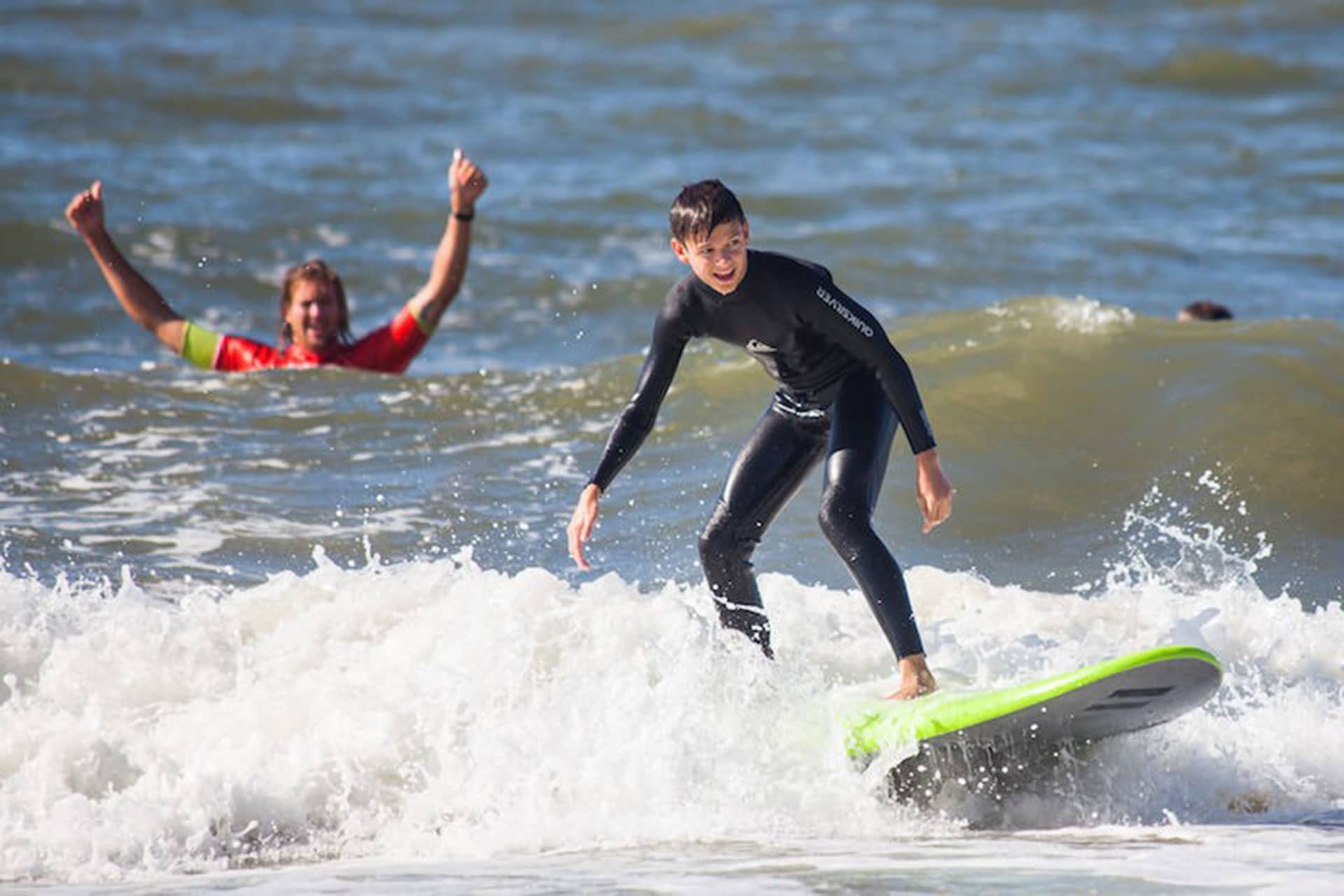
Our Texel Tips for you
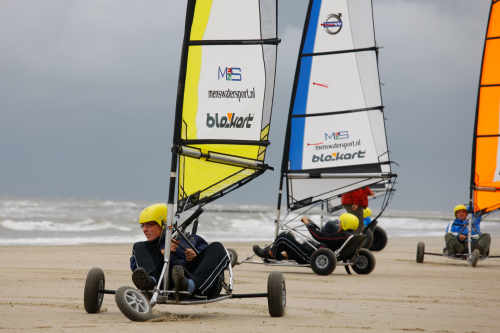
Zandbank Texel
Face the challenges during the sporty activities in the nature of Texel.
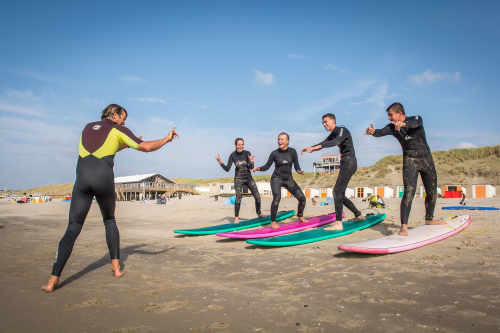
Beach Camps Texel
Get to know the best board and beach sports on Texel together with your peers!
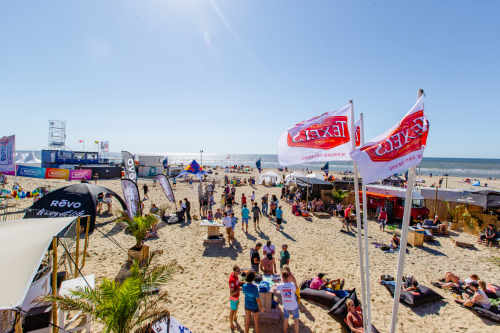
WAVES festival
At WAVES you can enjoy the summer feeling during different kinds of sports & music.
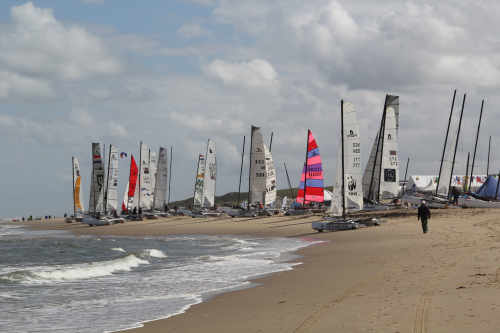
Catamaran race
Come and watch the biggest catamaran race in the world. Who is the fastest around the island?
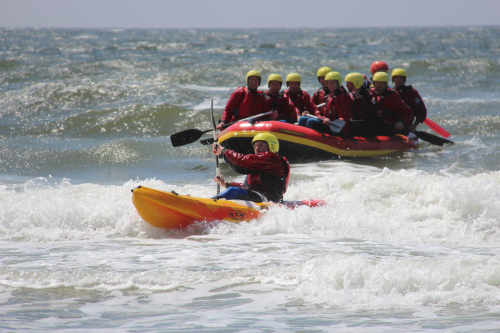
Surf kayaking and rafting
Do you think you can ride the waves of Texel?
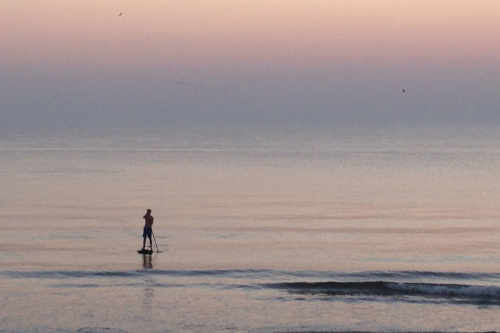
Move on the water on a surfboard without using the waves!
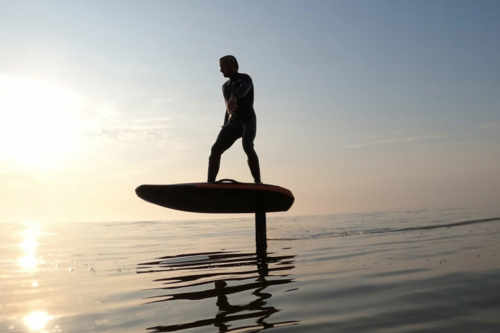
The latest trend in watersports, electric surfing on the water!
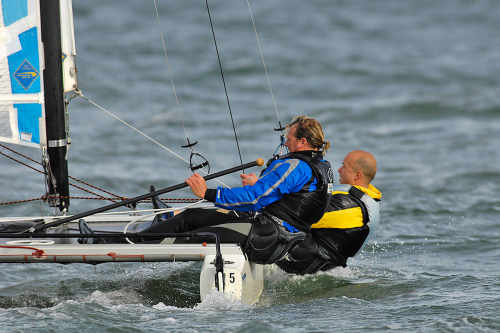
Catamaran sailing
Experience an adventure on the water during the spectacular catamaran sailing.
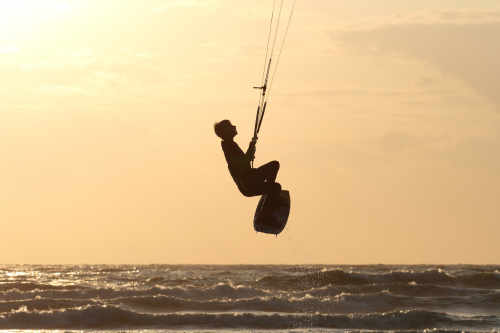
Kitesurfing
Experienced or inexperienced? Learn all the ins and outs of kitesurfing.
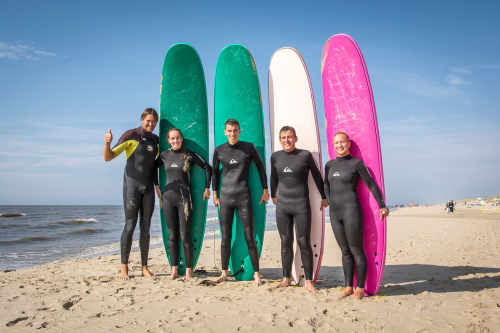
Discover the fun and addictive effect of waves and learn to surf at Foamball and Surfcenter Paal 9.
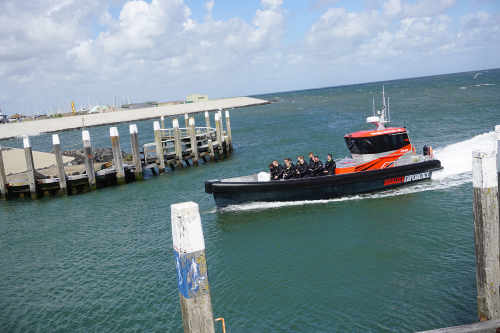
Bruuzer boat trips
Enjoy a spectacular adventure and experience the ultimate thrill during the various boat trips.
Book your stay on Texel
If you like to be on the water, you don't want to drive too far for that during your vacation. The parks of De Krim Texel are all a short distance from the beach and the sea. In the north of Texel you will find Holiday Park De Krim and Hotel Molenbos . In the west you can stay at Campsite Kogerstrand , Campsite De Shelter , Villa Park De Koog , Residentie Californië or Bungalow Park 't Hoogelandt . And in the south is Campsite Loodsmansduin . The choice is yours.
Editors De Krim Texel Update: March 19, 2021 14:00
Stay informed
Want to receive the latest news and great offers in your inbox (in Dutch)?
- 10 Krim certainties for free
- You can contact us every day
- Home on Texel
- Overview of our parks
- Sign up newsletter
- Photo contest
- Internships
- Holiday job
Travel preparation
- Boat trip TESO / To Texel
- Public Transport Texel
- Parking on Texel
- Opening hours
- Information per park
+31 222 - 390 112
+31 6 1349 1966
View the FAQs
Associated with:
We work together with:
- Holiday parks Texel
- Holiday parks De Koog
- Holiday parks De Cocksdorp
- Campings Texel
- Apartments Texel
- Hotel Texel
- Holiday home Texel
- Spring on Texel
- Summer on Texel
- Autumn on Texel
- Winter on Texel
Popular themes
- Texel with your dog
- With a group to Texel
Offers & Last minutes
- De Krim Certainties
- Offers Texel
- Last minutes Texel
- Packages Texel
- Free ferry crossing
- Good weather guarantee
© 1970-2024 De Krim Texel - Legal Information
The Cruising Catamaran Performance Debate
Which Cruising Catamaran Performs Better…And Does It Really Matter?
A client recently alerted us to a YouTube video posted by a catamaran dealer that is blatantly misleading and inaccurate. If you listen to this dealer, every catamaran manufacturer, other than the Fountaine Pajot brand, is slow, unsafe, not seaworthy and not fit to be a cruising catamaran.
While we agree that the Fountaine Pajot brand is an excellent product (we sell a lot of them), it certainly is not the ONLY good cruising catamaran in the world. There are many products available that are as good and like so many things, when it comes to choosing a cruising boat, it often boils down to personal preference, especially in this category of cruising catamaran.
2022 UPDATE: You will still find some great information below regarding cruising catamarans, especially if you are in the market to buy one. But lots has happened in the Performance Cruising Catamarans category since this post was written a few years ago, like Catana is back in the game with tons of innovation and a fresh new look. In addition to reading this article, be sure to read:
- 2022 Performance Cruising Catamaran Comparison
- We Bought a Performance Cruiser Catana OC 50
Cruising Catamarans Performance
The dealer in the video our client mentioned to us specifically focused on the superior performance of the Fountaine Pajot compared to some of the competing brands in the cruising category like Leopard Catamarans , Nautitech Catamarans , Bali Catamarans , Lagoon Catamarans , and Catana Catamarans .
The fact is that there is very little difference in speed between similarly lengthed cats in this category. All these catamarans are displacement hulls and they pretty much sail to hull speed with intermittent surfing. Therefore, when sailed efficiently, these cats should have very similar performance.
We hear terms such as power-to-weight ratio (sail area to displacement) bandied about a lot by yacht salespeople of the various boat brands as an indicator of performance. While this is definitely a factor and certainly has an effect on acceleration and light wind performance, it is not the only factor. Some catamaran brands will be faster around the cans in a regatta while others will be better when making long passages.
What one should also consider is that when cruising is that a catamaran’s performance will be dictated by sea state as well as wind speed and direction. In light winds, there will probably be a screecher or asymmetrical spinnaker deployed and in strong winds the sails will probably be reefed. This means that in cruising mode, most sail plans are optimized to the conditions. Therefore, when evaluating a cruising catamaran’s performance, there are many factors to be taken into consideration. This is not a simple cut-and-dried argument.
Catamaran Performance Factors & Calculations
To display the different factors and calculations which are relevant when it comes to catamaran performance, we went to Multihull Dynamics for data and pulled some numbers on the two boats most mentioned in this dealer’s video, namely Lagoon and Fountaine Pajot. Here is what we found on the Multihull Dynamics site:
- Base Speed – An empirically derived indicator of the speed a given boat could average over a 24-hour period (best days run) under a variety of conditions. Here again the Lagoon had better numbers with 9.82 knots versus 9.46 knots for the FP Helia 44 – this explains why the Lagoons are so successful on the long Ocean races like the ARC
- KSP – Kelsail Sailing Performance number is a measure of relative speed potential of a boat. It takes into consideration Sail area, Displacement and length at Waterline. The higher the number the higher the speed predicted for the boat. Here the FP Helia 44 at 6.06 had better numbers than the Lagoon 450 which comes in at 6.02 – the Helia is the lighter boat.
- TR – Texel Rating provides a handicap system for widely varying boats sailing together in a race. The formula is essentially the inverse of the Base Speed formula with constants applied to make the results useful. The Texel rating system permits the calculation of time to sail a given distance. Thus a boat with a higher TR can be expected to take longer from start to finish than a boat with a lower TR. The Lagoon 450 came in at 141 versus the FP Helia 44 at 144.
- Interestingly the Leopard 45 came in with better numbers than the Lagoon and the FP as follows: Bruce number – 1.25; Base Speed 10.65; KSP 7.68 and TR 122.
- The numbers for Antares PDQ44 are very similar to the Helia 44 and Lagoon 450.
- Unfortunately there was no data available for the Bali or current Nautitech designs.
*Disclaimer: All data quoted here was derived from Multihull Dynamics. Catamaran Guru offers the details in good faith and does not guarantee or warrant this data.
>>Click on the pictures above or go to Multihull Dynamics website for a full explanation of the graphs.
While the Fountaine Pajot dealer touts the superior performance of their brand, actual data shows that the Lagoon brand has won more ARC cruising rallies than any other brand of cruising catamaran. These are hardly the statistics of “just a charter catamaran that sails in 50-mile circles and lacks performance”, as is claimed by this dealer. As an example, check out these ARC and ARC+ rally results in which Lagoon consistently features well:
- Spirit, Lagoon 450 Flybridge – 1st Multihull
- Cat’Leya, Lagoon 52 Sportop – 2nd Multihull
- Sea to Sky, Lagoon 450 – 3rd Multihull
- Dreamcatcher, Lagoon 52 – 4th Multihull
- Sumore, Lagoon 570 – 5th Multihull
- Opptur, Lagoon 500 – 6th Multihull
- Lea, Lagoon 52 – 10th Multihull
- 2015: 380 Havhunden, first in ARC+ Multihulls Division in corrected time
- 2013: 620 Enigma, first in ARC+ Multihulls Division in corrected time
- 2012: 560 Feliz, first in ARC Multihulls Division in real time
- 2011: 560 Blue Ocean, first in ARC Multihulls Division in corrected time & third in ARC Multihulls Division in real time
- 2010: 620 Lady Boubou, first in ARC Multihulls Division & 11th overall in real time
This is NOT an indication of how good or bad one boat over another is, but rather an indication of dealer bias ! We are sure this debate will continue but it is our considered opinion that one should look at the overall boat and not be blinded by issues that might or might not be manufactured by over-zealous sales people. As we have said before, it often comes down to personal preference.
Performance Cruising Catamarans
High-performance cruising cats are becoming more popular and there are a lot more on the market than even just five years ago, but it’s not for everyone, especially if you are not a skilled sailor. Daggerboards and bigger rigs require more skill and are not for the average sailor.
We’ve been racing on and off for years on different catamarans and we’ve always had great fun sailing and surfing at speeds of 15+ knots. But as fun as that is, it can be a white knuckled, wild ride in bad conditions and can leave the crew tired and tense because one has to really pay attention. At these speeds any mistake could be catastrophic since there is so much load on the rig. So, make no mistake, sailing fast in less than good conditions is hard work, particularly when you sail shorthanded.
When only the two of us cruise along on our own boat, we really appreciate the pleasure of gliding through the water at 8-10 knots, relaxed and comfortable. Would we love to be able to coast along at a good clip in very light winds? Sure, we would love to own an Outremer or Catana! But that type of performance cat will cost us probably twice the price of a regular cruising catamaran. Is it worth the money for the average cruiser? Debatable.
With the advancement of technology, more people will eventually be able to sail these performance cats skillfully and will be able to afford them as costs come down but until such time, we believe that the average sailor can very happily sail at fair speed toward their destination, safely and relaxed on an average cruising catamaran as discussed above. The fact is, one or two knots of speed, which is what the difference between these cruising cats MIGHT be, will not make or break your passage.
2020 Update: At the time of writing this article, we owned a Lagoon 450 SporTop , not a rocket ship by any means, but a fair sailing boat. We now own a Bali 5.4 catamaran that is significantly lighter and faster in general as a cruising catamaran and we love the extra speed. However, I have to say that this boat is less comfortable underway than the heavier Lagoon. It is more buoyant, a little more skittish and tend to surf much quicker. So one has to pay more attention in more vigorous conditions. It can be tiring on a long passage, but it sure is fun!
Stephen says, “I personally like the Bali because it is a more lively boat and sails very well – when we picked our boat up in France it was completely empty and bobbed like a cork which we were not used to because our Lagoon was a much heavier boat. Since we have now equipped her with all the world cruising equipment as well as big dinghy, etc. she is a little heavier and a lot more comfortable. It is a fact that weight affects performance – the lighter the boat the better performance one can expect. We flew across the Atlantic when we were nice and light but the boat still performs well now that she is at full cruising weight”.
The Bottom Line
So, to conclude this argument, dealers are always somewhat biased about the products that they represent. Manufacturers go to great lengths and spend a lot of money training their dealer networks to be knowledgeable about their products and represent them well with the buying public. They rightfully expect loyalty from their dealers and expect them to present a positive image to the consumer. We all get that. However, when dealers trash and misrepresent their competition with manufactured issues in order to sell their own products, they do a disservice to the buying public and the industry in general.
We want to hear what you have to say! Tell us about performance on your cruising catamaran and also check out our article on why we chose our own catamaran .
Reminder! Check out these fresh updates on performance catamarans:
Contact us if you have any questions regarding catamarans, Fractional Yacht Ownership or our Charter Management Programs .
Estelle Cockcroft
Join our community.
Get the latest on catamaran news, sailing events, buying and selling tips, community happenings, webinars & seminars, and much more!
13 thoughts on “The Cruising Catamaran Performance Debate”
Thanks for a sober writing. I am the owner of the Lagoon 380 Hahunden, and agter with you. I have a spreadsheet with 75 different cruising cat models and the elapsed times in 29 races, and there is not much difference in perforfance. Can send it if uou want. Greetings.
I would like to see that spreadsheet for sure!
I own a Venezia 42′ and if my boat is part of your spreadsheet I would especially love to see it! Could you please send me a copy even if it’s not on there?
To discuss performance and Lagoon or FP in the same sentence is crass. These are not performance Catamarans, purely floating caravans. They have no pretence to performance only cruising capacity, any indicator of performance is purely coincidental.
I own a Privilege 495 and wouldn’t trade it for any other cat.
Hi Jack, I am interested in the performance of your boat. I understand that mini keels decrease performance considerably. Thanks Di
I would like to point out that the data that you use from Multihull Dynamics is completely flawed due to an inaccurate displacement value. Multihull Dynamcis inexplicably lists the Helia at 14 tons, while Fountaine Pajot and your site list the boat at 10.8 tons. This is quite a big difference and skews all the metrics calculated by the site. The Helia is obviously a lighter boat and performance in catamarans starts with weight, so it is undoubted that the Helia will be more lively than the Lagoon. I totally get your point that that does not mean that it will be more comfortable. Second, on the ARC data front: my father sailed twice across the same route in the Atlantic in the last 10 years and I’m very familiar with the conditions. The trade winds there tend to be rather lively and in those conditions weight will matter less. I would expect to see different results in lighter conditions. All that said, the dealer in question is undoubtedly doing their marketing with an agenda.
Hi Ivan, thanks for your input regarding the Helia 44 weight discrepancy. We are aware of this and it holds good for both vessels. You will note that the Helia 44 shows a displacement UNLOADED of 10.8T while the Lagoon 450 shows an UNLOADED displacement of 15T. In order to get accurate performance numbers we assume that Multihull Dynamics have used a number that represents the LOADED weight of both vessels. This means that for the Helia 44 it went from 10.8T to 14.1T (an increase of 3.3T) and in the case of the Lagoon 450, it went from 15T to 20T (an increase of 5T), since it a larger boat overall with more capacity. Based on the above I think we can safely say that we are looking at a fair and accurate comparison. Your input is really appreciated and we are always open to comment and correction to ensure the information we put on the site is accurate and fair.
Thank you for the clarification on displacement.I do see that they have bumped up the Lagoon 450 displacement as well so that’s a fair comparison. I wish they published that clearly because it changes numbers quite a bit as all manufacturers typically post the weight of their boats unloaded.It looks like the Lagoon makes up for the greater weight with a bigger sail area, so that will probably add up to greater effort needed to manage those larger sails but with modern systems, all these things can be managed. Thank you for the clarification and your insight overall.
I think the misconception people have about “performance” catamarans, is that the reason sailors gravitate towards them is not their speed, it is their ability to sail in light air. If you have a catamaran that will sail at windspeed or close to it in 5-8 knots, you’ll actually sail instead of cranking up the diesel. Those true performance catamarans capable of this that also have all the creature comforts of the Helia/Elba45 or Lagoon450/46, are 50+ feet long, and twice the price unfortunately.
You are so right! Well said.
Good article! For me, the weight includes all the stuff you are taking on a month long (or longer) journey (Full fuel +extra cans, 2 sups, dive tanks and compressor, 4 cases of wine…). My opinion is that the performance cats hull design suffers more when loaded to the gills. Ride quality is also very important and is often glossed over by the performance cat advocates.
You are completely right and that was part of strategy when we raced across the Atlantic with the ARC rally. We knew that all the cats would be loaded to the max for the crossing which no doubt makes them less efficient sailing cats. Fortunately on the Bali 5.4 the buoyancy calculations is for a fully spec’d and loaded boat. So we left and sailed like a bat out of hell right off the bat and we were sailing very efficiently, making 200+ NM distances every day. We figured that as the other cats start using their fuel, water and supplies, they would sail a little more efficiently but by then we would be well ahead of the pack, and it worked. We surprised even the very fast performance cats and all the while eight of us onboard were sailing in complete comfort and were eating gourmet meals three times a day! LOL- Of course the TS’s beat us but it is hardly a fair fight. LOL
Leave a Comment Cancel Reply
Your email address will not be published. Required fields are marked *
Save my name, email, and website in this browser for the next time I comment.
Recent Posts
First-annual virgin islands boating exhibition (vibe).
VIBE – It’s a Destination Boat Show! Join us May 10 – 12 at
BALI Catamarans Unveils The New Bali 5.8 Flagship
CATANA GROUP launches its 14th BALI CATAMARAN model, the BALI 5.8, for the brand’s
Love Stories At Sea…because it’s valentine’s day
Because it’s Valentine’s day, we wanted to celebrate all the couples that we helped
Your Go-To Resource for all your Catamaran Needs!
Check out our brochure to learn about all we have to offer and why
For more than 30 years, we have been a part of the catamaran community and created Catamaran Guru™ to encourage and educate all the aspiring sailing out there. We understand the dream of traveling the world by catamaran and created a one-stop-shop to make that dream a reality for you.
- Stephen & Estelle
- Testimonials
Get Started
- Yacht Sales
- Used Yachts
- Charter Management
- Boat as Business Programs
- Seminars & Events

Explore Texel
Outdoor activities & Sports
Water sports
Would you like to enjoy water sports on Texel? This can be done in many ways! Discover the many activities on Texel's water.
There are various hotspots for windsurfers and kite surfers around the island, both along the North Sea side and on the Wadden coast. Wave surfers are mainly active along the beaches of De Koog. There are limited options for water skiing at Oudeschild. Catamaran sailors can also sail around Texel to their heart's content.
Are you coming to Texel with your own boat? Then you can go to Waddenhaven Texel . This modern harbor has many facilities and offers berths for small and large yachts.
Do you just want to have a nice swim, in the sea or in a pool? A good swimming opportunity is always close by on Texel. Experience it yourself!
More about water sports on Texel

Surf kayaking and surf rafting
Looking for a spectacular trip? Then Branding Kayaks or Brandingraften is exactly what you are looking for! Discover your own muscle power and surf the

Sailing and surf boarding
Texel is one of the finest catamaran venues in the Netherlands, with the ‘Ronde om Texel’ (Round Texel) race in June – the world’s biggest catamaran event.

On holiday you naturally want to have a nice swim. This is possible in many places on Texel. Take a dip in the sea or swim a length in an outdoor swimming
Do you want personal tips for your holiday? Then sign up for the newsletter

Texel rating rule for multihulls, 2015
Preface The purpose of this rating is to enable multihulls of various classes to race together. To give all room for research and development by designers. These rating regulations are applicable at all races where various designs or classes partake together, but one racing result is desired.
Rule administration The rule is published under authority of the CTC, the Catamaran and Trimaran Club of the Netherlands. The CTC has the right to amend the regulations if necessary. In case of doubt about any part of the text of the rules, the spirit of the rule counts, not the letter.
TR numbers The TR-numbers as used in the Netherlands are available for measured as well as un-measured boats.
Easy calculator On this website you find an easy calculator to test with your own boat or to experiment with a new design. Only use the tab key to go to all cells that may need your input. Starting with the name of your boat to the last one, asking a true wind value Vt. In the example given on the file, the value of the heeling force is made equal to the righting force by adapting Vt. This is done by using the function goal seeking in the cell heeling. Make the value in that cell = righting, by changing the value for Vt. That value for Vt is the stability limit. Above that value, reefing is recommended, even may be required.
Rating Ratings will be determined for all types of multihulls on measurable data, guaranteed by the class organisation, the builder, the owner, using formulas, verifiable by anyone. A Texel Rating (TR) is calculated, with the formula given at the end of the ruletext, using normal rules of rounding.
Abbreviations, formulas and calculations used ( Drawings and formulas )
Determination of the rated length The length over-all is the horizontal distance from the most forward point of the hull to the farthest point at the stern of the hull. Lines through these points have to be measured both from vertical positions. Rudders and rudder equipment not to be included in LOA.
- FOC, Forward Overhang Component That is the difference at the bow between the most forward point and the forward end of the rated length. If the bow is vertical or hanging backward than FOC = 0
- AOC, After Overhang Component That is the difference at the stern between the most afterward point of the stern and the aft end of the rated length. If the stern is vertical or leaning forward than AOC = 0
- RL, Rated Length. The rated length is the horizontal distance measured at 2% of LOA above the waterline of the boat, without the crew on board. To calculate FOC. the freeboard VL at the stem and the angle α at the top of the stem have to be measured.
- FOC = VL * tangent α - (2% of LOA) * tangent α The same must be done to determine AOC, for designs with a genuine stern overhang. Generally AOC = 0
RL = LOA - AOC - FOC
Determination of the sail areas of main and foresails The real sailarea is determined by one of the usual methods. For cabin multihulls the area of the mainsail is measured, using the Simpson rule. Applying the methods given on sheet 2, results in the real areas of mainsail, jib, drifter, staysail, as well as the spinnaker (screacher). From these data, the effective areas, will be calculated by using an efficiency percentage. That requires the determination of some ratios, specified below.
If a mast is used which is swivelling, with a section which is not a circle, (a wing mast), then the area of the mast (defined as follows) is added to RSAM calculated from MSAM, as shown below, which results in the final RSAM, to use in RSA.
Determination of the spinnaker or screacher area For open cats provided with a spinnaker, RSAS = MSAS * 0.15, if the spinnaker area satisfies the following conditions. Spinnaker areas as given in class regulations. Otherwise use maximum allowed spinnaker areas, as given below.
For boats with a length of more than 22 ft (6.71 m) depending on the spinnaker area, a rated area will be calculated. Spinnakers have to be measured as illustrated on the drawing.
The following dimensions have to be measured along the sides, stretched normally.
The area is calculated as follows :
All spinnakers have to be measured by a measurer and have to be stamped by the measurer with the following information: • date of measuring • spinnaker area • name and/or nr. of the measurer • paraph of the measurer
Determination of the weight of the crew
If the total sailarea >= 11 m 2 , than for crew one-man boats always take 75 kg.
For cabin multihulls the crew weight in kg. is calculated as follows: WC = 70 * RL 0.78 - 60
Centreboards The rating for open catamarans not having an efficient centreboard is calculated by raising the not rounded ratingnumber with 4%. For cabin multihulls the correction factor Q for not using a centreboard or daggerboard, using RL and the draft as input, is calculated as follows: Q = 0.94 / (draft/RL) 0.037
Rating formula TR rating = 100 / (RL 0.3 * RSA 0.4 / RW 0.325 ) * K * P * Q The rating number is rounded to an integer of two or three digits, using the normal rules for rounding. A TCF number, if preferred, is calculated as follows: 100 / TR number (with 3 decimal numbers).
Inspection during races During the season, the CTC rating committee may inspect boats on the measurements and weights used in the formulas. To keep the rating system as simple as possible (the KISS principle), no penalties are included yet, for instance for excess bowsprit (spinnaker boom) length, or for less than minimum headroom etc. It is easy to include extra multiplying factors, if users want to.

How To Sail a Catamaran Upwind or Downwind (Complete Guide)
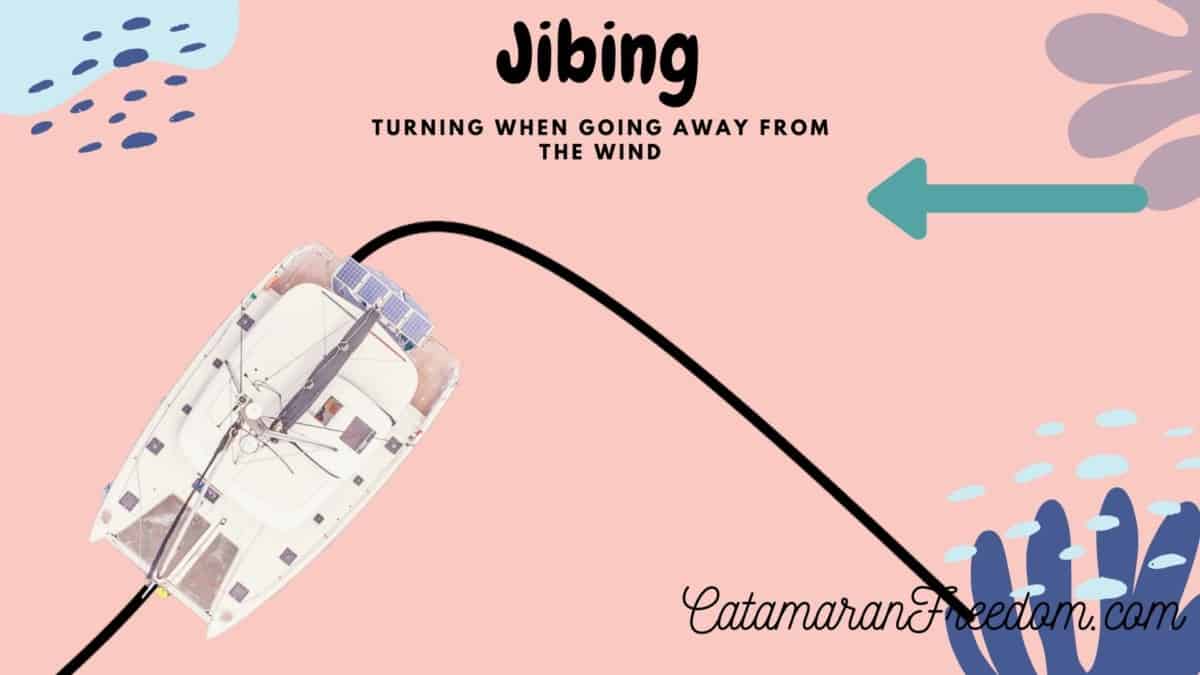
As an Amazon Associate, we earn from qualifying purchases. We may also earn commissions if you purchase products from other retailers after clicking on a link from our site.
Catamarans are the perfect backdrop to a relaxing fishing excursion, with sails in the wind as you reel in 50-pound striped bass. But when the gusts pick up and shift directions, you’ll find yourself weathering uncharted territory where reefing and speed are unlike a classic monohull. Sailing a catamaran upwind and downwind requires a skill set much different from the classic one hulled sailing.
To sail a catamaran upwind, maintain high speeds, center the mainsheet, limit angles to 45-60°, lose unnecessary weight, upgrade to Kevlar sails and daggerboards. To sail a catamaran downwind, maintain 160-170°, use asymmetrical spinnakers, reef when winds exceed 15 knots, and jibe.
Downwind gusts can help a catamaran surf down waves, something that is extremely exciting. However, facing those dreaded upwind breezes (especially without daggerboards) can signal the end of a soothing Mediterranian adventure. To learn how to sail a catamaran upwind or downwind, read on!
Table of Contents
How Sailing a Catamaran Is Different Than Monohulls
Multihull vessels like catamarans respond very differently to rough surfs, gusting winds, and shallow waters. If you’re still questioning, “What’s the difference?” here’s your answer.
Compared to classic monohull boats, catamarans are:
- More stable — at sail and when anchored — and less likely to heel or rock from side to side.
- Less responsive to waves and winds (detecting these requires keen observation skills).
- Likely to struggle when sailing into the wind.
- Harder to tack (high speeds are essential to avoid losing momentum)
Traditional yacht enthusiasts quickly learn that sailing a catamaran is smoother, though stiff headwinds and choppy surf are more challenging to overcome. Learning to master upwind and downwind catamaran sailing is essential to get the most out of your trip
If there’s one debate looming over the sailing community, it’s the age-old catamaran versus monohull discussion.
What is the difference b e tween cats and monos?
The UPWIND Catamaran Sailing Guide
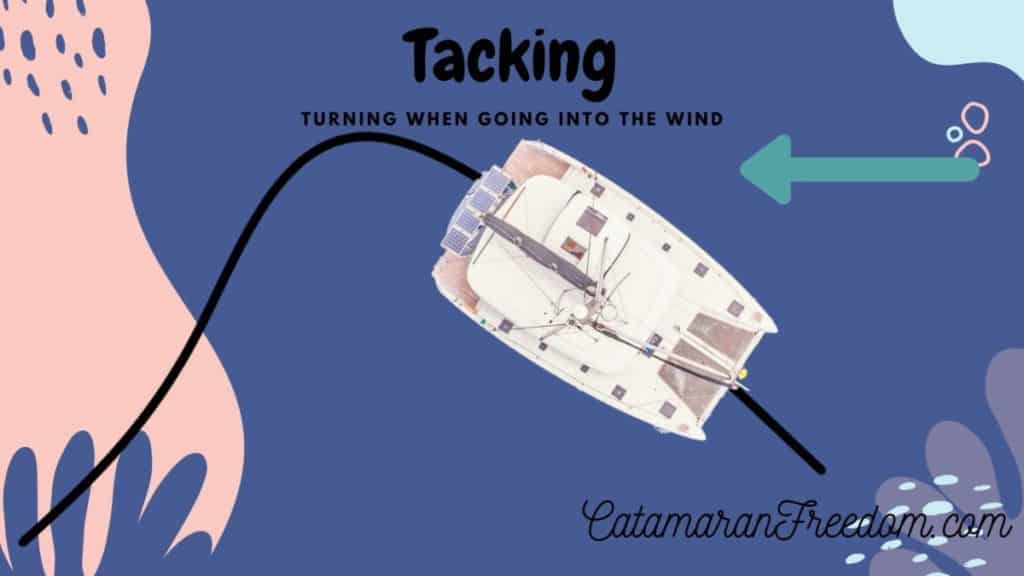
Sailing upwind means you’re cruising your catamaran toward the wind (i.e., Traveling east against westward-blowing gusts). This added wind resistance makes it more challenging to reach your destination swiftly and safely, as upwind journeys could come with:
- Relentless sail luffing (fluttering like a bedsheet on a clothesline)
- Slowed speeds and VMG (velocity made good)
- Deep-digging bows in waves
- Bridge deck slamming
Preparing for an upwind journey means taking the path of least resistance and the “long way home.” To survive your next upwind sail unscathed, follow these tips:
Maintain High Speeds
Thirty-knot gusts at-sea, high speeds, and a Leopard 44 might sound like a recipe for disaster. But a catamaran’s multihull design allows for lower capsize risks and less heeling in rougher conditions. It’s far gentler on the vessel to maintain momentum than to build throttle against heavy winds.
Sailing a catamaran upwind requires sail, chart plotter, and daggerboard monitoring. The video below discusses upwind sailing tips as your catamaran’s bow faces 20-knot gusts.
Limit Angles to 45–60°
A straight line is undoubtedly the shortest pathway to your on-shore destination, but sailing your catamaran directly into the wind will land you in the dreaded “no-go zone.” That is, sailing into 15-knot wind gusts directly, draining all forward momentum (unless motoring), and being unable to steer responsively.
The point of sail “sweet spot” for catamarans sailing upwind is between 45 and 60°. This tight range will keep the bow headed in the right direction — toward a particular cove or dock — without cutting throttle (too direct) or over-inflating the sails (too perpendicular).
An onboard flag can help you accurately detect your current point of sail (there are of course electronic aids as well). You should adjust the sails intentionally to ensure the perfect angle:
- Slowly let out your sail.
- Wait for the telltale to begin luffing (flapping in the wind).
- Gently tug it back until the telltale flapping stops.
Upgrade to Kevlar Sails
Catamarans are impressively resistant to heeling where dainty monohulls might capsize. But instead of “giving” with the wind, a catamaran’s classic polyester sails will resist 30+ knot gusts almost entirely. Even the highest-tenacity Dacron sailcloths will develop wear and tear, performance-reducing distortions, or irreversible breakage in heavy winds.
Investing in heavy-duty Kevlar sails can create stiffer and more damage-proof sails that can better handle upwind excursions. Upgraded catamaran sail cloths can help you travel a crisper pathway at a close-hauled 45° without overcompensating at the wheel.
Select a Daggerboard Catamaran
Daggerboards are retractable vertical keels attached to a catamaran’s underbelly. These large, below-deck protrusions can prevent or limit any leeway in exceptionally windy conditions.
Daggerboards vs Centerboards explained!
In other words, daggerboards will keep your catamaran from drifting with the wind or falling off course. The $30,000 higher price tag is undoubtedly off-putting, especially when proper tacking technique might render them useless. But the benefits are substantial:
- Sailing 1-2 knots faster than a standard keeled catamaran
- Traveling 5-7° closer to the no-go zone
- Reaching your upwind destination quicker and with less dramatic tacking
Catamarans with daggerboards installed are more reliable and accurate when traveling upwind. But these built-in keels require proper care to prevent grounding or lurching into a reef. Until your sea voyages bring you upwind, keep your daggerboards raised.
Clean Hulls
Aside from trimming the sails and staying in the close-hauled zone, there’s only so much you can do onboard to better tackle an upwind voyage. But what about beneath the water’s surface? A dirty underside can wreak havoc on your catamaran’s all-around performance — cutting RPM by 1,000, draining fuel efficiency, and slashing your maximum speed by several kts.
Keeping your catamaran hulls free of barnacles, grime, and fouling can make your upwind travels far less treacherous. Revive upwind sailing potential by:
- Spraying the bottom clean with an on-land hose
- Scrubbing the slimy waterline with a soft brush or sponge
- Dislodging caked-on algae with a plastic putty knife
- Applying a fresh coat of antifouling paint
Scrub your catamaran’s underbelly clean at least four times a year, though monthly is preferred for maximum performance. You’ll quickly notice a swifter, cleaner, and smoother journey the next time you take your catamaran up the coast.
Trim the Sails & Center the Mainsheet
“Trimming” the sails is a beginner’s catamaran cruising skill designed to improve speed and better catch the breeze. By changing the angle of the sails and adjusting line tension, you can evade sail luffing and add several knots to your voyage — especially upwind. It takes practice to adapt your sails to the wind speed and direction, so here are the catamaran sail trimming basics:
- Lock the mainsheet and position the boom so that it’s somewhat leeward (further away from the wind gusts).
- As you veer away from the wind, slightly ease the traveler and monitor the telltales.
- Start slowly easing the mainsheet when you’re on a beam or reaching (when the catamaran is at the right angle to the wind).
- Keep an eye on the telltales and watch for differences between leward and windward side (bluffing or flopping).
As you go through the classic trial and error process, don’t forget to keep the mainsheet centered — or as close to the center as possible. Otherwise, turning the winches in 18+ knot winds will require superhuman strength to get back on track, complicating your sail.
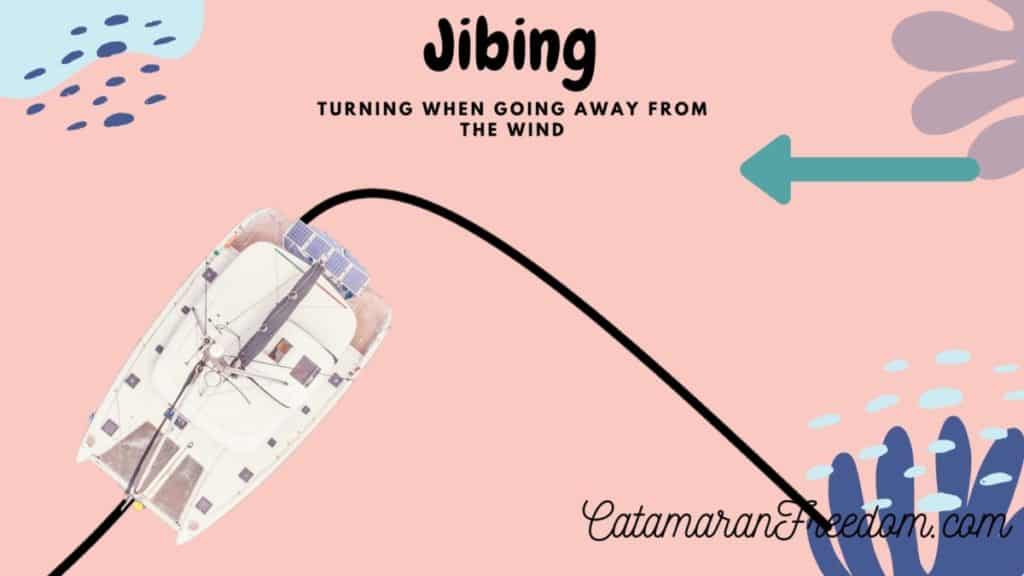
Steering clear of the no-go zone (straight into the wind) will keep your catamaran from stalling and your sails from flapping around and potentially increasing wear. But you’ll never arrive at your coordinates if you’re staying on a strict 45° path in one direction. This is where skilled catamaran sailors begin “tacking”, the art of turning your boat with the wind on your bows.
When you tack on a sailboat, you’re forcing the bows into the wind’s direction (no go zone). Tacking redirects the bow to the opposite 45° angle — from 3 o’clock to 9 o’clock — and creates a zig-zag formation or subtle 90° turns through the water. Proper tacking requires a skilled crew on larger catamarans but can be a solo pursuit. Here’s how to do this maneuver carefully:
- Start by sailing as close to the close-hauled territory as possible (within 40-45°).
- Choose a heading 90° away as your turn “destination.”
- Alert the crew to the tacking (if applicable).
- Slowly release the loaded jib sheet and begin pulling the lazy sheet inward.
- Steer the catamaran into the turn while maintaining speed (don’t speed up or slow down).
- Allow the sail to backfill to assist with the pivot.
- Release the jib sheet (watch your fingers, as the line releases quickly).
- Tighten the jib sheet on the opposite side and feel the wind start powering the boat.
Tacking is a challenging sailing concept to master. But it’s also the only way to sail upwind efficiently.
Turn On the Motor
A traditional, motor-free catamaran cruise can be soothing if there’s no destination in mind. However, the sails become inefficient against 15-knot winds when your preferred snorkeling spot is several miles directly into the wind. The best way to sail upwind is by turning to your catamaran’s twin diesel engines and hitting the throttle. Even cranking the engine to half-speed can ignite your speed by 1-2 knots and improve the course by up to 20°.
The DOWNWIND Catamaran Sailing Guide
Sailing downwind means you’re cruising in the same direction as the wind’s blowing (i.e., Journeying north alongside north-blowing winds). This extra momentum can generate higher speeds on a run, though the consequences of unpredictable downwind exist. Spinnakers becoming tangled around forestays or spinnaker collapse are looming concerns in high winds.
Downwind sailing is the catamaran sailors’ favorite direction, and thats why most people circumnavigating the globe is travelling with the tradewinds going west!
How to circumnavigate the world
Downwind trips are much more straightforward for novice sailors, but there are techniques for building speed and learning more about your boat. To better handle your next downwind sail like an expert, follow these tips
Use a Screecher or Asymmetrical Spinnakers
Spinnakers are a special type of sail ideal for downwind runs. Unlike a mainsail or jib that luffs in the wind, spinnakers inflate like a balloon and give maximum power at around 90-160° angles. These ultra-lightweight, colorful sailcloths come in two varieties: Asymmetrical and symmetrical. Most yachters attach asymmetrical spinnakers or screechers to their catamarans because they:
- Work well in close-hauls, beams, and broad reaches
- Boost speed by about 2 knots
- Resist damage in 25-knot downwind gusts
- Are quite versatile
The latest spinnaker tends to have more volume when tacked to the windward bow. These new designs allow them to catch more wind and pick up speed at nearly all deep, downwind angles (except directly at your aft).
Sailing a catamaran downwind isn’t quite as simple as easing the sails and cruising. The video below explains the catamaran difference when traversing the sea with the wind at your aft.
Choose the Right Angle
Sailing a catamaran directly downwind sounds like a decent strategy for picking up some momentum. But because catamarans travel faster with the wind at their sails, a less direct point of sail can maximize your velocity made good (VMG).
The proper point of sail for downward cruises is in the broad reach position — ideally between 160 and 170°, though up to 90° can be somewhat effective. This 10-20° off-center angle is slight but can boost your maximum speeds by a few knots.

Reef at 15 Knots
Though catamarans don’t heel or spill wind like monohull ships, the high wind pressure cues are more challenging to detect. Sailing behind 15 or even 20-knot gusts can overpower even the sturdiest sails when you jibe. Reducing your sail surface area and allowing more wind to flow through — reefing — will reduce speed(usually) and increase safety.
Always keep an eye on your anemometer while sailing downwind in windier conditions. Once it’s registering 15-20 knots, here’s what you should do:
- Reduce the mainsail’s pressure by loosening the mainsheet and repositioning the traveler leeward (away from the wind).
- Take the pressure off the boom vang.
- Lower the main halyard and hook reefing point #1 on the proper hook.
- Pull the reefing line manually (or with a winch).
- Put more tension back on the halyard and boom vang.
Time is of the essence while reefing downwind, and one reef might not be enough if you’re sailing into a squall. Be prepared for a second or third reef when winds measure 25 and 30 knots, respectively. If winds exceed 30 knots, remove the jib entirely and use the mainsail as you return to the marina.
These numbers above are general numbers and since cats don’t heel much it is very important to abide by the wind speed reefing table on your boat.
Why do catamarans capsize?
Jibe (Gybe)
Jibing (gybing) is the downwind version of tacking, meaning you’ll be heading off on another zig-zag 90° journey as you sail out of the bay. But unlike tacking, where you forced the ship’s bow toward the wind, now you’ll be guiding the boat’s stern away from the wind. Here’s how to jibe a catamaran safely and quickly:
- Make sure the traveler is in a center position (or close to center).
- Trim the sail to prevent the boom from swinging in mid-jibe.
- Angle the catamaran so you’re traveling a few degrees off from directly downwind.
- Choose a location in the distance that’s 90° from your current location.
- When the mainsheet feels lighter, bring the boom toward the ship’s center.
- Wait for the leech to rise (the sail’s rear edge).
- Release the mainsheet again.
While jibing can help you stay on course and pick up some speed, it comes with some risks. An uncontrolled boom can rapidly swing and crash into a crew member, cause unpredictable heeling, or damage the rig. Make sure all crew members are ready to jibe before beginning the process.
Reduce Speeds
The physics behind sailing is quite complicated and misconceptions about venturing downwind are common. Thanks to choppy waves (water resistance) and sails (lack of wind resistance), it’s impossible to sail downwind at faster speeds than the wind directly at your aft.
Sailing a catamaran upwind or downwind is more complicated than a calm, Caribbean sailing expedition. Prepare for your next windy escapade by:
- Checking the wind speed and direction via your local weather service
- Practicing reefing, tacking, and cruising skills in calmer conditions
- Experimenting with sail trims, headsail positions, and motor use
- Learning more about spinnakers, screechers, and gennakers
Every gust, knot, and reef will help you hone your catamaran sailing talents and better prepare for less predictable weather. Try to build your confidence and perfect your skills before exposing yourself to harsher conditions.
Owner of CatamaranFreedom.com. A minimalist that has lived in a caravan in Sweden, 35ft Monohull in the Bahamas, and right now in his self-built Van. He just started the next adventure, to circumnavigate the world on a Catamaran!
Leave a Reply Cancel reply
Your email address will not be published. Required fields are marked *
Save my name and email in this browser for the next time I comment.
Recent Posts
Must-Have Boat Gear for Catamaran Sailors!
Sailing is probably the most gear-intensive activity I've ever done; there are so many decisions to be made about what gear to buy now, for tomorrow, and what to definitely never buy. The gear on...
6 Best Trailerable Trimarans For Bluewater and Coastal Sailing
Having a boat costs a lot of money, even when you are not using it, marina fees, etc. And once it is in the water most sailors never go very far from their "home marina" and sailing will be somewhat...

The Ultimate Guide to Choosing Between a Sailboat or Catamaran for Your Sailing Adventures
C hoosing between a sailboat and a catamaran for your sailing adventures is a significant decision that depends on various factors, including your sailing preferences, experience level, budget, and intended use. Here's an ultimate guide to help you make an informed decision:
1. Sailing Experience:
- Sailboats: Typically require more skill and experience to handle, especially in adverse weather conditions. Ideal for sailors who enjoy the traditional feel of sailing and are willing to invest time in learning and mastering the art.
- Catamarans: Easier to handle, making them suitable for beginners. The dual-hull design provides stability, reducing the learning curve for those new to sailing.
2. Space and Comfort:
- Sailboats: Generally have a narrower beam and less living space. However, some sailboats may offer comfortable cabins and amenities.
- Catamarans: Wider beam creates more living space. Catamarans often have multiple cabins, spacious saloons, and expansive deck areas, providing a more comfortable living experience.
3. Stability:
- Sailboats: Monohulls can heel (lean) while sailing, which some sailors enjoy for the thrill but can be discomforting for others.
- Catamarans: Greater stability due to the dual hulls, providing a more level sailing experience. Reduced heeling makes catamarans suitable for those prone to seasickness.
4. Performance:
- Sailboats: Known for their upwind performance and ability to sail close to the wind. Some sailors appreciate the challenge of optimizing sail trim for efficiency.
- Catamarans: Faster on a reach and downwind due to their wide beam. However, they may not point as high into the wind as monohulls.
- Sailboats: Typically have a deeper draft, limiting access to shallow anchorages and requiring deeper marina berths.
- Catamarans: Shallow draft allows access to shallower waters and secluded anchorages, providing more flexibility in cruising destinations.
- Sailboats: Generally more affordable upfront, with a wide range of options available to fit different budgets.
- Catamarans: Often more expensive upfront due to their size and design. However, maintenance costs may be comparable or even lower in some cases.
7. Mooring and Docking:
- Sailboats: Easier to find slips and moorings in marinas designed for monohulls.
- Catamarans: Require wider slips and may have limited availability in certain marinas, especially in crowded anchorages.
8. Intended Use:
- Sailboats: Ideal for traditional sailors who enjoy the art of sailing, racing enthusiasts, or those on a tighter budget.
- Catamarans: Suited for those prioritizing comfort, stability, and spacious living areas, especially for long-term cruising and chartering.
9. Resale Value:
- Sailboats: Generally have a more established resale market, with a wider range of buyers.
- Catamarans: Growing in popularity, and well-maintained catamarans often retain their value.
10. Personal Preference:
- Consider your personal preferences, the type of sailing you plan to do, and the kind of lifestyle you want aboard your vessel.
In conclusion, both sailboats and catamarans have their advantages and disadvantages. Your decision should be based on your individual preferences, experience level, budget, and intended use. If possible, charter both types of vessels to experience firsthand how they handle and to help make a more informed decision based on your own preferences and needs.
The post The Ultimate Guide to Choosing Between a Sailboat or Catamaran for Your Sailing Adventures appeared first on Things That Make People Go Aww .

- Lost password
Please Support TheBeachcats.com
Regatta Reviews: Round Texel 2005 Wrapup and Results.
Added by damonAdmin on Jun 13, 2005 - 01:25 PM
- NED - F18 Heemskerk / De Boer, 2:16:35 hours
- NED F18 - Kenbeek / Brouwer, 2:20:57 hours
- NED F18 Geijssen / Van Capelle, 2:21:46 hours
- NED Tornado Spi Samama / Van Leeuwen, 2:11:11 hours
- FRA F18 Mourniac / Citeau, 2:23:13 hours
More articles in category Regatta Reviews & Beachcat Regattas
- Steeplechase Catamaran Race 2016, Final Results (by DamonLinkous on Dec 11, 2016)
- Steeplechase 2016, Storm Threat Day One (by DamonLinkous on Dec 11, 2016)
- Argentina Wins Olympic Gold in Mixed Multihulls 2016 (by DamonLinkous on Aug 16, 2016)
- Olympic Mixed Multihull Nacra 17 Day One (by DamonLinkous on Aug 11, 2016)
- Florida 300 Coverage (by DamonLinkous on May 16, 2016)
- 2016 Nacra 17 Worlds Final (by DamonLinkous on Feb 15, 2016)
- Day Four Nacra 17 Worlds, Clearwater Florida (by DamonLinkous on Feb 12, 2016)
- Nacra 17 Worlds, Clearwater Florida (by DamonLinkous on Feb 11, 2016)
- Florida 300 Date Set for May 17-21, 2016 (by cyberspeed on Oct 16, 2015)
- Hiram's Haul Date Set for Halloween Weekend (by cyberspeed on Jul 22, 2015)
Search The Beachcats
Today's events.
- March 16, 2024
- Ides of March Regatta, Somerville, TX
[ Add New Beachcat Event ]
My Wishlist
Not Downloaded 0
Notifications
No notifications yet! That's probably because you are currently not logged in. So, why don't you sign up?
- Airbus A330-300 232
- Zibo B737-800 112
- ToLiss A320NEO 101
- ToLiss A321 84
- Max Team Design B737 48
- Boeing 737-800 38
- FlightFactor A320 32
- FlightFactor B757 28
- Cessna Citation X 26
- VSKYLABS C-47 26
- FlightFactor A350-900 24
- LevelUp B737-800NG 23
- ToLiss A319 21
- Rotate MD-11 19
- SSG B747-8 17
- FlyJSim Q4XP 16
- All Products
- What is new?
- Recent Uploads
- Last Updated
- Recent Discussions
- Work in Progress
- This Days Best
- This Weeks Best
- Trending right now
- Most Followed
- Most Downloaded
- Airbus A330-300 141
- ToLiss A319 16
- ToLiss A321 45
- FlightFactor A320 26
- ToLiss A320NEO 52
- ToLiss Airbus A340-600 7
- JARDesign A330 1
- FlightFactor A350-900 15
- Boeing 737-800 13
- FlightFactor Boeing 767 6
- FlightFactor B757 20
- LevelUp B737-800NG 21
- SSG B747-8 1
- Zibo B737-800 64
- Max Team Design B737 11
- Magknight B787 1
- Beechcraft Baron 58 2
- Beechcraft King Air C90B 1
- Cessna Citation X 14
- Cessna Skyhawk 4
- Cessna Skyhawk (G1000) 0
- Cessna Skyhawk (Floats) 0
- Schleicher ASK 21 0
- Lancair Evolution EVOT-850 1
- Piper PA-18 Super Cub 3
- Van's RV-10 1
- Aero-Works Aerolite 103 0
- VSKYLABS C-47
- McDonnell Douglas MD-82 5
- Stinson L 5 Sentinel 0
- F-14 Tomcat 0
- F-4 Phantom II 0
HELICOPTERS
- Robinson R22 Beta II 2
- Robinson R22 Beta II (Floats) 0
- Sikorsky S-76C 0
Best Of Today
Best of this week.
- Intl. Airports 40
- Regional Airports 30
- Static Aircraft 0
- Bush Strips 0
- Mountains 0
- Landscape 42
- Landmarks 0
- Regional Bundles 0
- Libraries 2
- Ground Handling 2
- United States 23
- Russian Federation 14
- Costa Rica 5
- Kazakhstan 2
- Mauritius 2
- Netherlands 2
- United Arab Emirates 2
- More Countries
- All Aircraft
- Military Aircraft 0
- General Aviation 5
- Airline Aviation 1
- Other Aircraft 1
- Helicopters 0
Enhancements
- Aircraft Additions 4
- Aircraft Enhancements 5
- Driveable Cars 0
- Applications 6
- Miscellaneous 3
USER CONTENT
- Landing Challenge 0
- Flight Plans 1
- Checklists 22
- Paintkits 2
- Custom Views 0
- Reshade Presets 4
MISCELLANEOUS
- Stream Deck 2
- Model Matching 0
- Cockpit Additions 3
- Leaderboards
- User Gallery
- Recent Donations
- Livery Requests 262
- Scenery Requests 81
- In Progress 0
- Completed 58
KARMA LEADERS
Add-Ons uploaded
Knowledge Base
Many questions may already have been answered in our Knowledge Base. Check it out to get your answers prior to contacting us. Knowledge Base
About X-Plane.to
X-Plane.to is your platform of choice when it comes to X-Plane 12 add-ons, mods and liveries. No matter if paid or free: We cover them all. About us
You're one click away from staying up to date.
Useful Resources
Frequently Asked Questions have been answered here.
If you haven't found an answer, contact us. We're here to help.
Let us know about your suggestions for improvement and bug reports.
Check the status of X-Plane.to services in real time.
Russian Federation
Intl. airports, urkk - pashkovskiy. krasnodar.
Hi! This is the airport of the Russian city - Krasnodar. Redesigned for XP-12. Added new textures of the apron, taxiways and runway. Added 3D trees and grass that change color depending on the season. Ground traffic and ATC services have been implemented
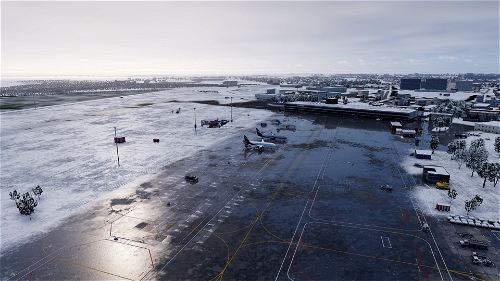
The roughness of the coating is realized depending on the type of coating. Traffic is smooth on the asphalt, shaking on broken slabs. For a more complete feeling of the effect, it is recommended to use XP Realistic
The following libraries are required for the script to work correctly: – BS2001 Object Library – CDB-Library – MisterX library – OpenSceneryX – Ru scenery – The Handy objects library
- SAM plugin for marshal animation
Unpack into the custom decorations folder
If you dislike, please write in the comments what you didn't like so that I can fix the flaws.
File Information
Initial File Release
Upload Permission You are allowed to upload my file, but you must properly credit me and add a link to my file.
Modification Permission You are allowed to modify or improve my file, but you must properly credit me and my original work.
Conversion Permission You are allowed to convert my file, but you must properly credit me and add a link to my file.
Asset Use Permission You are allowed to use assets of my file, but you must properly credit me and my original work.
© URSS652 - All rights reserved. Any reupload or redistribution of this file without the author's prior written consent is forbidden. This X-Plane 12 add-on was created by URSS652 and shared in Scenery Enhancements » Intl. Airports for X-Plane 12.
Downloading ...
Thanks for downloading.
- Sign up for free!
- Browse other Intl. Airports Mods
Guest downloads are disabled for this file. The author decided to only allow members to download this file. Creating an account is free!
Download your files
- Main File 1.0 January 09, 2023 - 233.80 MB
- Changelogs 0
- User Gallery 0
2 Comments Browse comments
- Reply Copy Link
This looks beautiful!! Great work.
The only improvement I could think of, is to use less external libraries and use the default XP assets instead.
URSS652 1 year(s) ago
Good afternoon! Thanks for the feedback!
I tried very hard to use as few third-party libraries as possible, but unfortunately there are still not enough objects in XP12 that are really needed for the airfield, such as the ILS system
Initial release of this file just launched. Welcome aboard!
Frequently Asked
Questions? Find your solution here.
Pretty empty over here.
Pretty empty over here. Upload Image
These users have donated to URSS652 to keep him making awesome add-ons everyone can enjoy.
Dependencies
These add-ons may be required or recommended to use.
Image Upload
External links.
Why is this file hosted external? There may be several reasons. Mostly, we have not yet been able to contact the owner of this file and ask him or her for permission to host the file on your own servers. Maybe the legitimate author does not like his file to be hosted elsewhere. Legally, we are only permitted to host files uploaded by the author himself or with explicit permission to do so.
The link is broken or not working? Unfortunately, files which are not hosted on our servers are beyond our control. Please use the "Report" button on the bottom right of this page to report dead links and we will try to fix it. Thanks for your understanding!
What do you want to report?
According to the law, only the person or entity whose copyrighted work was stolen is entitled to file a copyright claim. Law prohibits us from processing third-party requests if you are not the owner, a legal agent or copyright holder of the content in question. We therefore ask you to contact the rightful author of the content and inform them about this issue. Only they can file a DMCA complaint.
We kindly ask you to understand that we cannot process copyright requests through this form, as we are required to receive such correspondence in the form of a formal complaint to comply with the Digital Millennium Copyright Act. Please familiarize yourself with the DMCA procedure and send us your notification to the address below. Please note that incomplete or invalid complaints will not be processed.
In accordance with our policy, we respond to notifications of alleged copyright infringement that comply with the Digital Millennium Copyright Act on the U.S. Copyright Office website and other applicable intellectual property laws. Our response may include blocking access to or removing allegedly infringing material and/or terminating accounts. If we remove or disable access to material as a result of such a notification, we may notify the owner or administrator of the affected content to provide a counter-notification.
Let us hear your voice!
Modify your comment, report comment, delete comment, wow ready to share..
Remember to share your file with your friends and people all over the internet. This is the only way to make sure that as many people as possible come across your add-on!
By the way, you can also share a dedicated link to your file below!
RSS Selector
Change language, marked comment(s).
- Skip to main content
- Keyboard shortcuts for audio player
3 escaped inmates are charged with killing missing U.S. sailing couple in Caribbean
The Associated Press

Police transport escaped prisoners Atiba Stanislaus (far left) and Trevon Robertson in Kingstown, St. Vincent and the Grenadines, on Monday. The men had escaped from a police holding cell in Grenada on Feb. 18 and are suspected of hijacking a catamaran while Ralph Hendry and Kathy Brandel, who disappeared, were aboard. Kenton Chance/AP hide caption
Police transport escaped prisoners Atiba Stanislaus (far left) and Trevon Robertson in Kingstown, St. Vincent and the Grenadines, on Monday. The men had escaped from a police holding cell in Grenada on Feb. 18 and are suspected of hijacking a catamaran while Ralph Hendry and Kathy Brandel, who disappeared, were aboard.
SAN JUAN, Puerto Rico — Three escaped inmates from the eastern Caribbean island of Grenada were charged in the killing of a U.S. couple whose catamaran they hijacked , police said Thursday.
Ron Mitchell, a 30-year-old sailor; Atiba Stanislaus, a 25-year-old farmer; and Trevon Robertson, a 23-year-old unemployed man, were charged with capital murder, escaping lawful custody, housebreaking, robbery and kidnapping. Stanislaus also was charged with one count of rape, according to a statement from the Royal Grenada Police Force.
The men appeared in court on Thursday and were ordered held in prison until their hearing in late March.

Police suspect U.S. couple are dead after their boat was hijacked in the Caribbean
They were accused of escaping from a police holding cell on Feb. 18 and hijacking a catamaran owned by Ralph Henry and Kathy Brandel while they were aboard. Authorities said they believe the couple was thrown overboard as the suspects sailed to nearby St. Vincent, where they were arrested on Feb. 21.
The three men were ordered deported from St. Vincent on Monday.
The nonprofit Salty Dawg Sailing Association described Hendry and Brandel as "veteran cruisers" who participated in last year's Caribbean Rally from Hampton, Virginia, to Antigua, and had planned to spend the winter cruising in the eastern Caribbean.
Their bodies have not been found.
- Election 2024
- Entertainment
- Newsletters
- Photography
- Press Releases
- Israel-Hamas War
- Russia-Ukraine War
- Global elections
- Asia Pacific
- Latin America
- Middle East
- AP Top 25 College Football Poll
- Movie reviews
- Book reviews
- Financial Markets
- Business Highlights
- Financial wellness
- Artificial Intelligence
- Social Media
3 escaped inmates from Grenada charged with murder after US sailing couple vanishes
Police transport escaped prisoners Atiba Stanislaus, far left, and Trevon Robertson who are handcuffed together in Kingstown, St. Vincent and the Grenadines, Monday, March 4, 2024. The men had escaped from a police holding cell in Grenada on Feb. 18 and are suspected of hijacking a catamaran while Ralph Hendry and Kathy Brandel, who disappeared, were aboard. (AP Photo/Kenton Chance)
The yacht “Simplicity”, that officials say was hijacked by three escaped prisoners with two people aboard, is docked at the St. Vincent and the Grenadines Coastguard Service Calliaqua Base, in Calliaqua, St. Vincent, Friday, Feb. 23, 2024. Authorities in the eastern Caribbean said they were trying to locate two people believed to be U.S. citizens who were aboard the yacht that was hijacked by the three escaped prisoners from Grenada. (AP Photo/Kenton X. Chance)
- Copy Link copied
SAN JUAN, Puerto Rico (AP) — Three escaped inmates from the eastern Caribbean island of Grenada were charged in the killing of a U.S. couple whose catamaran they hijacked, police said Thursday.
Ron Mitchell, a 30-year-old sailor; Atiba Stanislaus, a 25-year-old farmer; and Trevon Robertson, a 23-year-old unemployed man, were charged with capital murder, escaping lawful custody, housebreaking, robbery and kidnapping. Stanislaus also was charged with one count of rape, according to a statement from the Royal Grenada Police Force.
The men appeared in court on Thursday and were ordered held in prison until their hearing in late March.
They were accused of escaping from a police holding cell on Feb. 18 and hijacking a catamaran owned by Ralph Henry and Kathy Brandel while they were aboard. Authorities said they believe the couple was thrown overboard as the suspects sailed to nearby St. Vincent, where they were arrested on Feb. 21.
The three men were ordered deported from St. Vincent on Monday.
The nonprofit Salty Dawg Sailing Association described Hendry and Brandel as “veteran cruisers” who participated in last year’s Caribbean Rally from Hampton, Virginia, to Antigua, and had planned to spend the winter cruising in the eastern Caribbean.
Their bodies have not been found.

Krasnodar Airport, Pashkovskiy (KRR/URKK)
Airport Pashkovskiy is located in Russia near the city of Krasnodar . The international codes of Pashkovskiy airport are ICAO: URKK and IATA: KRR . Pashkovskiy is located at latitude 45.0347 and longitude 39.1705 . The elevation above sea level is 118ft ( 36m ). Local timezone at the airport is UTC/GMT +3:00 hours .
Airport Information
Pashkovskiy, 118ft (36m), 45.0347, 39.1705, 20:44 sat, 16 mar, europe/moscow, +3h.

Pashkovskiy Airport Arrivals

Pashkovskiy Airport Departures
Pashkovskiy airport map, gelendzhik (gdz / urkg ) russia, 101 km, vityazevo (aaq / urka ) russia, 143 km, sochi (aer / urss ) russia, 187 km, kerch intl (khc / ukfk ) ukraine, 220 km, shpakovskoye (stw / urmt ) russia, 231 km, rostov na donu (rov / urrp ) russia, 252 km, mariupol international airport (mpw / ukcm ) ukraine, 263 km, sukhumi dranda (sui / ugss ) georgia, 287 km.
- PlaneMapper

IMAGES
VIDEO
COMMENTS
Texel is one of the finest catamaran venues in the Netherlands, with the 'Ronde om Texel' (Round Texel) race in June - the world's biggest catamaran event. ... If you have always wanted to try sailing a catamaran, Texel's catamaran sailing school De Eilander offers you that chance. You can go on a group trip or take a course of lessons ...
The biggest catamaran race in the world, from a sailors perspective.Sail Video System is proud to bring you all the action onboard.This years race featured s...
Contact us to be featured in the 2012 Round Texel Film !!!Sail Video System brings you some of the best catamaran action shots from the Round Texel race 2011...
The Round Texel Race has become the world's largest catamaran sailing race. Every year, over 300 catamarans compete on the water with the aim of sailing around the island of Texel as fast as possible! Both amateur sailors and the international sailing elite participate in this race. In recent years, the race has grown into a major public event ...
of the waves. Catamaran sailing. Catamaran sailing is without a doubt the most spectacular form of sailing and Texel is one of the most beautiful places in the Netherlands to do so. You race across the water with wind force 5 and a speed of 40 km/h. Is that too fast?
Round of Texel 2024 Begin June. Texel is really the place to be for catamaran sailors. To join the Round of Texel they arrive with hundreds to the island.Every year this biggest catamaran race takes place around the island, which has started out as a small one.. The beach at pole 17 is the traditional starting and finishing point. In the week before the round there are surfing and catamaran ...
Catamaran race 'The Round Texel Race' is the catamaran race in the world. Hundreds of "cat" sailors come to Texel and sail around the island as fast as possible. It's a stunning sight. The start and finish are at Paal 17. Good views of the race can be had from various spots. At Paal 17, near the lighthouse, from the dyke at Oosterend and ...
From June 8 until June 13, the Texel beach at Paal 17 will be the center of everything that sails on the sea, beach and through the surf at high speed. The Dutch Championship Catamaran sailing has expanded to three full (instead of half) racing days and the ultimate Round Texel Race on June 13.
Round Texel. Saturday June 8, 2024 The world's largest catamaran event. About 300 catamarans, including the international sailing top, try to sail around the island as quickly as possible. The start at Paal 17 is spectacular. Times: from approx. 8.00 am to 6.00 pm.
Texel Round 2023: Dominance of Family Teams. Ideal conditions for the 44 th. edition of the famous round the island race. During a warm and sunny day with 14-18 knots from N to NE, 240 cats left the beach for the relative calm North Sea waters and very little surf due to the wind coming over the island. With the easterly winds, practically ...
The Texel rating is a handicapsystem for multihulls. Handicap numbers will be calculated by a performance formula using measurements of the designs or boat data from other sources. These data can be taken from designers specifications or from other information, easily found on the internet. Open cats: Texel rating for open cats
No surprise really, because the island is surrounded by water. The Texel coast also has relatively more, and slightly bigger, waves than the rest of the Netherlands. Plus, our beautiful island enjoys an abundance of sunshine and wind. Ideal conditions for water sports such as surfing, catamaran sailing, surf kayaking, coastal rafting and stand ...
The Texel rating system permits the calculation of time to sail a given distance. Thus a boat with a higher TR can be expected to take longer from start to finish than a boat with a lower TR. ... If you have a catamaran that will sail at windspeed or close to it in 5-8 knots, you'll actually sail instead of cranking up the diesel. Those true ...
Round Texel 2023 Edition was held this weekend at Texel Island in the Netherlands. Good sunny conditions judging by Laurens Morel shots (check entire gallery at his fb here) . Blue Ribbon for Albert & Mitchel Steenman on a Nacra F20 FCS. Corrected Time / Texel Rating for Hans & Marius van Dam racing a Goodall Akurra F18, second Wik & Rob Becker ...
At Sailing School De Eilander you can sail catamaran and there is a Nacra test center. You can find them near Cape North. Surrounded by sea Surrounded by the Wadden Sea and North Sea, the island of Texel is inextricably linked to sailing. This applies to catamaran sailing in particular. De Eilander is located at the northernmost tip of Texel.
Surfing. There are various hotspots for windsurfers and kite surfers around the island, both along the North Sea side and on the Wadden coast. Wave surfers are mainly active along the beaches of De Koog. There are limited options for water skiing at Oudeschild. Catamaran sailors can also sail around Texel to their heart's content.
Texel rating rule for multihulls, 2015. Preface. The purpose of this rating is to enable multihulls of various classes to race together. To give all room for research and development by designers. These rating regulations are applicable at all races where various designs or classes partake together, but one racing result is desired.
To sail a catamaran upwind, maintain high speeds, center the mainsheet, limit angles to 45-60°, lose unnecessary weight, upgrade to Kevlar sails and daggerboards. To sail a catamaran downwind, maintain 160-170°, use asymmetrical spinnakers, reef when winds exceed 15 knots, and jibe. Downwind gusts can help a catamaran surf down waves ...
General - Tuapse lies on the Black Sea coast of Russia.The harbour provides excellent all round shelter. Position - 44º 06' N 39º 05' E Charts, Pilots & Cruising Guides - See the following link for Black Sea Charts Approach & Entrance; From the south - The mountains of the Caucasus give way to green hills with frequent river valleys.The coast is sandy.
Choosing between a sailboat and a catamaran for your sailing adventures is a significant decision that depends on various factors, including your sailing preferences, experience level, budget, and ...
The winners of the 1997 Round Texel Race needed 2 hours, 30 minutes and 36 seconds. Hans Bouscholte and Ruurd van Wieren were 11 seconds faster in September 2003, but that is all history now. The battle for the second and third F18 (also on handicap) was still going on.
5 STARS. URKK - Pashkovskiy. Krasnodar. Hi! This is the airport of the Russian city - Krasnodar. Redesigned for XP-12. Added new textures of the apron, taxiways and runway. Added 3D trees and grass that change color depending on the season. Ground traffic and ATC services have been implemented.
SAN JUAN, Puerto Rico — Three escaped inmates from the eastern Caribbean island of Grenada were charged in the killing of a U.S. couple whose catamaran they hijacked, police said Thursday.. Ron ...
They were accused of escaping from a police holding cell on Feb. 18 and hijacking a catamaran owned by Ralph Henry and Kathy Brandel while they were aboard. Authorities said they believe the couple was thrown overboard as the suspects sailed to nearby St. Vincent, where they were arrested on Feb. 21.
Infrastructure. As for now the pupils of FC Krasnodar Academy have two compressed-air supported arenas with artificial turf at their disposal to provide for training during the cold season, twelve natural grass pitches and three synthetic ones. In addition, the youngest Bulls have an opportunity to train in a special "children's village".
Airport Pashkovskiy is located in Russia near the city of Krasnodar.The international codes of Pashkovskiy airport are ICAO: URKK and IATA: KRR. Pashkovskiy is located at latitude 45.0347 and longitude 39.1705.The elevation above sea level is 118ft (36m).Local timezone at the airport is UTC/GMT +3:00 hours.